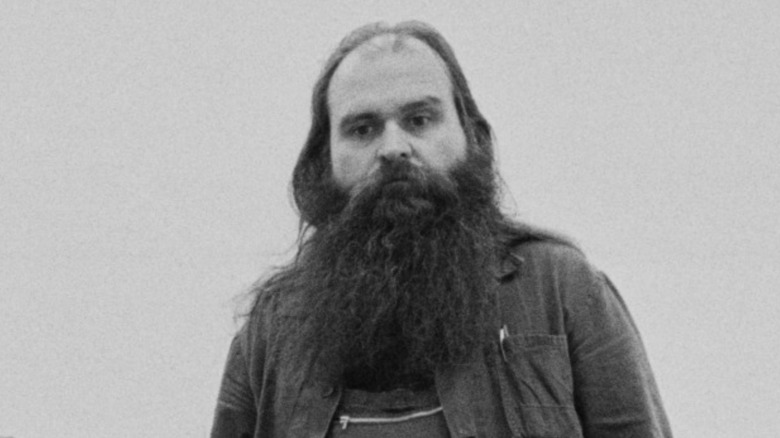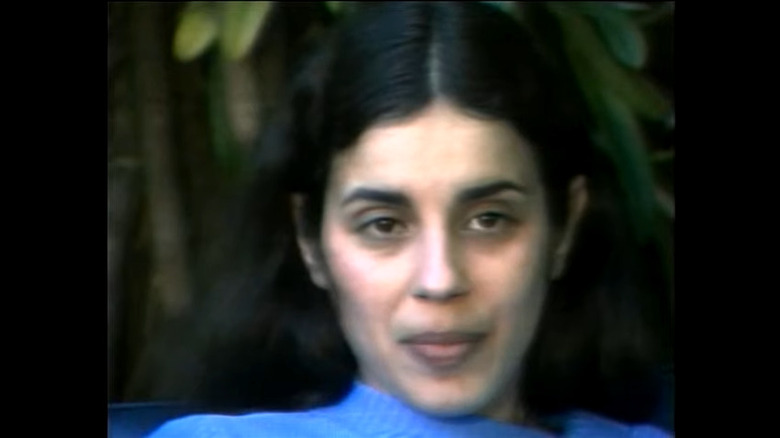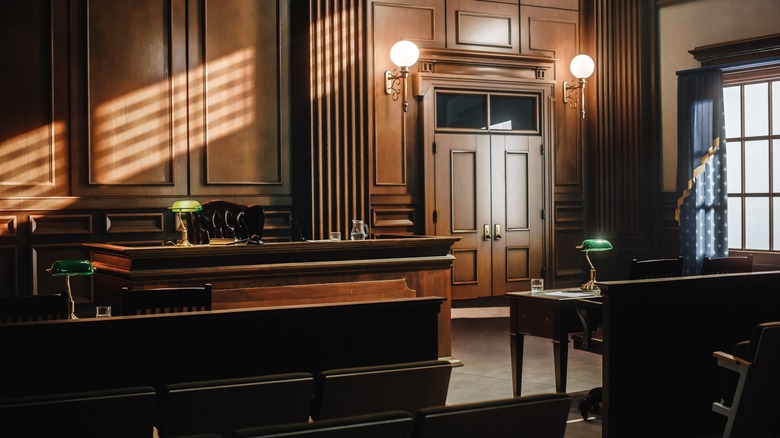Why Artist Carl Andre Was Acquitted Of Murder
Carl Andre is a sculptor known for his abstract and minimalist works of art but in 1985, his name was the subject of headlines for a completely different reason. His wife, fellow artist Ana Mendieta, tragically fell to her death from the 34th floor of their apartment building, and authorities named Andre as a suspect (per Britannica). Mendieta was born in Cuba, but she moved to the U.S. child refugee during Fidel Castro's communist rule. She pursued a career in the arts and met Andre at an art gallery in New York in 1979. The two wed six years later.
As reported by ATI, Andre and Mendieta had opposite personalities. The former was outgoing and loved the limelight, while the latter was reserved and didn't like being the center of attention. Friends of the couple often witnessed them argue, and one of their disagreements turned disastrous just months after their marriage. On September 8, 1985, Andre called 911 to report that his wife fell from the window of their apartment in Greenwich Village. During the call, Andre explained to the dispatcher that he and his wife were both artists, and he claimed they had an argument about how he was more well-known than she was. "And she went to the bedroom, and I went after her, and she went out the window," he stated in the call, per The New York Times.
The scene of the incident
Authorities found Ana Mendieta dead wearing only her blue underwear. Her body fell to the roof of an establishment near her apartment building. Carl Andre had visible scratches on his face, and the bedroom the couple shared was also found in disarray. As reported by Timeline, a doorman also told authorities that he heard a woman yelling what sounded like "No, no, no, no," just before Mendieta's body fell from the window. Andre told authorities at the police station that his wife either jumped or accidentally fell to her death, but when questioned at the scene, he said "I think she jumped." When asked why he thought that, the artist answered by saying, "I just know" (per The Village Voice).
Mendieta's mother was adamant that Andre killed her daughter. Her sister also told authorities that she had been in contact with Mendieta just days before she died, and she stated that she had plans of getting a divorce, per The New York Times. Investigators suspected Andre had something to do with his wife's demise, and they gathered as much information as they could before charging him with the second-degree murder of his wife about two years after her death. He opted for a non-jury trial and put his fate in the hands of the judge. Andre went to trial in January 1988.
Carl Andre's trial
As reported by ATI, the prosecution did what they can with the information that they had to prove that Ana Mendieta didn't die by suicide, nor was it an accidental fall. They said in court that she couldn't have jumped, as she was scared of heights. It couldn't have been an accident either, they stated, as she stood at only 4 feet, 10 inches, and the window where she fell from was blocked by a radiator and the window's height nearly reached her shoulders.
In court, arguments ensued about the symbolism of Mendieta's artwork. The defense stated that she depicted voodoo, violence, and death wishes in her art, as noted by The Village Voice. Furthermore, the defense team pointed out that the doorman who claimed he heard Mendieta repeatedly screaming "no" before she fell had a history of auditory hallucinations, which challenged his credibility as a witness. Both sides argued back and forth, with the prosecution laying out information to convince the judge that Mendieta was murdered, and the defense pushing back and countering the prosecution's evidence to cause reasonable doubt.
The judge's verdict
The prosecution presented only circumstantial evidence in court. There were no witnesses who saw what happened when Ana Mendieta died, and there was no concrete evidence that conclusively pointed out that Andre murdered his wife. The judge who presided over the case, Justice Alvin Schlesinger, delivered a not-guilty verdict in February 1988. As reported by the New York Times, Schlesinger stated, "The defendant's guilt was not proven beyond a reasonable doubt." Andre showed no emotion when the verdict was read, and when asked for a statement outside the court, his only words were, "Justice was served."
The art world was divided about Andre's acquittal. While some believed that he was innocent, others were not so sure. Andre continued his career as an artist, and at times, Mendieta's supporters showed up to protest during his exhibits. In 2017 — decades after Mendieta's death — a Carl Andre exhibition was held at the Museum of Contemporary Art, and a group of artists showed up carrying cards that read, "Where is Ana Mendieta?" "We wanted Ana to have a presence and a voice," one person said, per the Los Angeles Times.



